What Is Eco Brutalism Architecture and Is It Sustainable?
If you’ve scrolled through social media, you’ve likely stumbled upon an eco-brutalist structure at one point. These buildings, covered in stunning greenery, have become incredibly popular due to their aesthetic.
Another reason people have fallen head over heels for eco brutalism is that they believe they are a more sustainable option for architectural design. In saying that, eco brutalism, just like traditional brutalism, has received considerable criticism.
Most of it relates to eco brutalism’s sustainability status. Continue reading to learn everything you need to know about eco brutalism. We’ll also answer your burning question – how sustainable is eco brutalism?
What Are Brutalism and Eco Brutalism?
Before we jump into eco brutalism, let’s talk a bit about brutalism first. Brutalist structures are generally characterized by steel, concrete finishing, and an overall sense of pragmatism often needed in a post-war society.
Essentially, brutalist buildings are designed to prioritize function over everything else. If you have not heard of eco brutalism before, it is an architectural design that plays on a sense of juxtaposition between divergent concepts.
The term eco brutalism refers to the mix of brutalist style and the green we recognize with sustainability. The difference between harsh concrete and greenery hanging on buildings allows for a unique range of concepts and ideas. These concepts include the vibrant resilience of nature and grim human design.
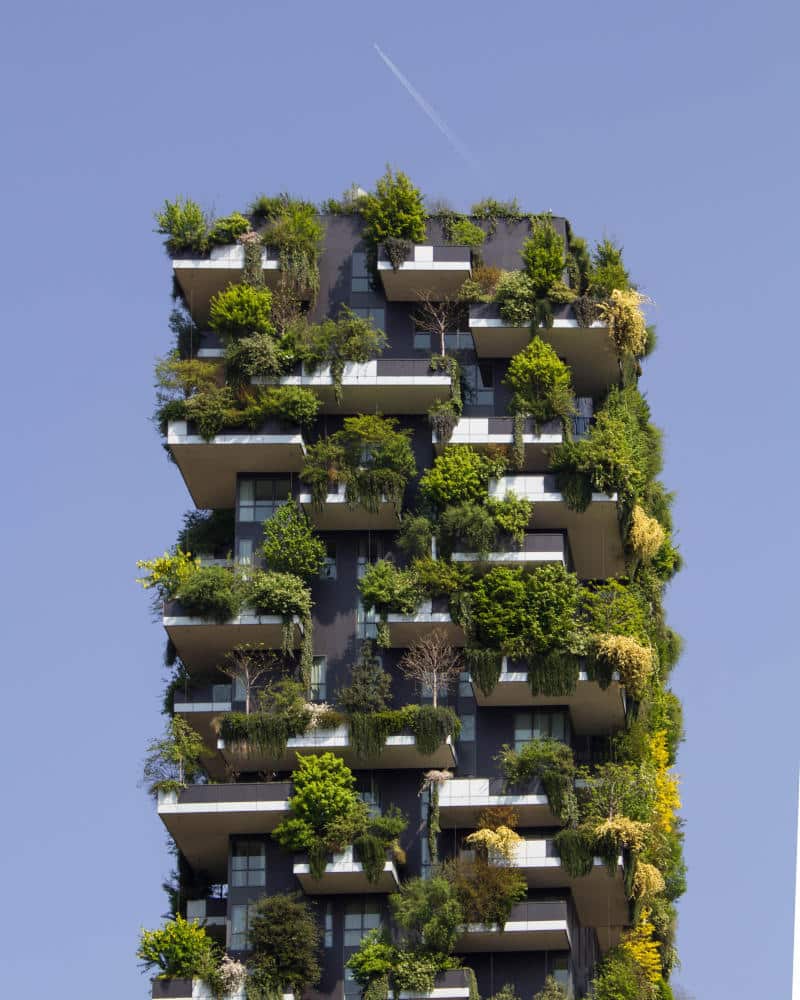
Trees, plants, and other various green elements are included in brutalist structures, which ultimately turns them into eco brutalist buildings. These elements make use of natural light and brighten spaces. In essence, eco brutalism is a mix of brutalist style and greenery.
Brutalism is all about austerity, while eco-brutalism focuses on bringing life to buildings in both a metaphorical and literal sense. Both elements combine, creating stunning spaces that celebrate life while still having a brutalist backdrop. It is because of these elements that eco brutalism is linked with sustainability.
Supposedly adding greenery to these buildings improves their ecological footprint. This, in addition to the beauty that comes with eco brutalism, has resulted in huge interest in this type of architecture. It is why we are seeing more and more buildings designed this way popping up on our streets.
Why Have Eco Brutalism Properties Become More Popular?
Brutalist buildings have grown in popularity for many reasons. They are making a comeback, and it isn’t hugely surprising when you think about how trends are said to be circular in that way. This is true for the likes of art, music, and fashion. Regarding architecture, Brutalism is the best style to exemplify this principle.
One of the big reasons for their popularity in the beginning and why brutalist buildings are returning to the scene is their practicality. They prove incredibly useful in several situations. For example, any post-war scenario where people are in dire need of building houses and resources are scarce.
In addition, for churning out buildings fast, which is what was needed following the Second World War. It was easy as brutalism buildings are generally not very attractive looking. At its core, it prioritizes function over everything else.
Most brutalist buildings are created using steel and concrete. However, not every brutalist building must be made of these materials. So long as the building is functional, it meets the requirements and expectations of a brutalist-style property.
Is Eco Brutalism Good for the Environment?
Brutalism, by its very nature, is harmful to the planet. Several concerns have been raised about brutalist architecture and its sustainability status. For instance, there are concerns about its energy efficiency and connection with the concrete industry.
Raw concrete is the primary material used in brutalist architecture, and the industry that provides concrete is one of the biggest producers of carbon dioxide. Concrete can harm dirt, the ripest layer on the planet, and can also cause water contamination, flooding, and soil erosion.
This is because concrete is used to make hard surfaces, and this adds to surface overflow. Concrete also can harm the air due to the substances in it. The ingredients in concrete can be poisonous and radioactive, which means the cement can put human and animal life at risk.
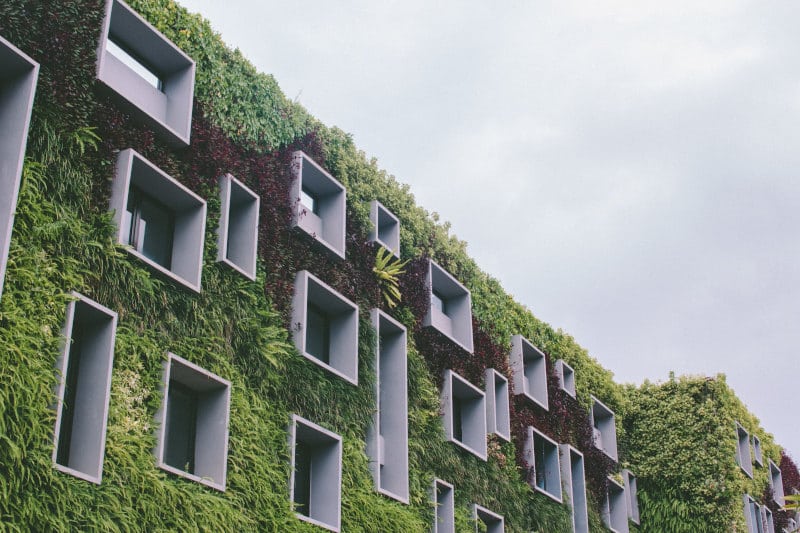
Some would argue, however, that concrete is a more eco-friendly material since it lasts a long time. After all, it is an incredibly valuable asset for flood control, avoidance of rising waters and mud streams, damming methods, and more. Moreover, scientists are now finding ways to create sustainable components to make concrete to lessen the adverse ecological effects.
As you can probably tell, it is hard to say whether brutalism is actually good for the planet. However, what is evident is that eco brutalism is not eco-friendly since, at the end of the day, concrete is a central part. Therefore, popping some greenery on the building afterward is, in fact, just greenwashing.
Instead of taking this route, we should be discussing how to actually create more environmentally sound materials and buildings. The conversation should not just be focused on achieving a sustainable aesthetic.
What Is the Purpose of Eco Brutalist Architecture?
Brutalist architecture was mainly utilized for residential and institutional buildings to help address the need for housing. The buildings had a distinct quality, making them so appealing today.
However, they received their name because they were considered ‘brutal’ when they first came about. This type of architecture is mainly associated with libraries, theatres, schools, churches, and social housing.
In addition, the style has been adopted in countries all across the globe following world war two when there was a desperate need for housing. Essentially, brutalist architecture and brutalism as a whole were influenced by all the post-war issues and the modern idea that rational design would create the best architecture.
Why Is Eco Brutalism Controversial?
Brutalism was essentially a movement in modern architecture. It is this movement that is responsible for a lot of striking building designs we see today. In saying that, it was also a rather controversial movement due to its emphasis on the use of unfinished concrete for exteriors.
The movement emerged following the second world war, and its characteristics center around simplicity and functionalism. These themes defined earlier architecture, but brutalism sought to incorporate early principles into a post-war world. With that, urban reconstruction became a pressing necessity. Brutalism places a significant emphasis on textures, materials, construction, and producing highly expressive forms.
Brutalism has been misunderstood and considered ugly or out of fashion for many years. However, it is starting to become very popular again. With sustainability and climate action being an important topic in 2022, it’s no surprise that eco brutalism has arrived. Similar to brutalism, there is a lot of controversy around eco brutalism.
Generally, it is down to artistic critique. However, that doesn’t stop people from being intrigued by the design and deeming it to be a sustainable option for designing buildings. Unfortunately, as we have realised previously, it is not an environmentally-friendly option.
The purpose of eco brutalism is to incorporate sustainable elements successfully. It represents a clear commentary on the lack of environmental consideration discovered in numerous forms of modern architecture.
Examples of Eco Brutalism Buildings
Eco brutalism is prevalent in many areas around the world. In particular, India, Costa Rica, and Brazil.
Below are some examples of eco brutalism buildings located across the globe. They all have exciting and innovative takes on eco-brutalism with lots of different features.
1. The Mamun Residence
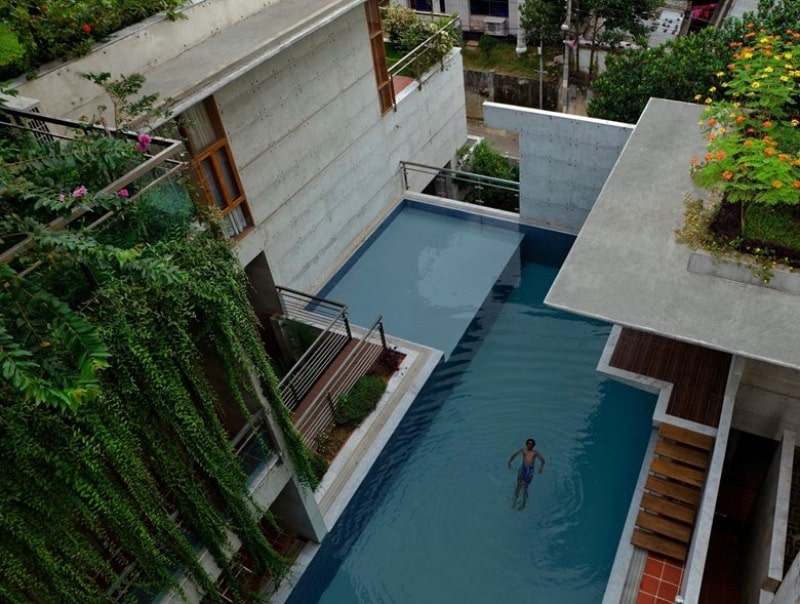
First on our list of examples of eco brutalism buildings is the Mamun Residence. It was designed by Shatotto Architecture for Green Living and is located in Chittagong in, Bangladesh.
The inspiration for the design was the mathal hat worn by many farmers here. Since there is intense sun all year round, the plan to build a green living home with a large projecting roof to offer structure and share the space was perfect.
There are stunning layered balconies with an array of hanging greenery. These plants hang down above the pool, creating a zen experience. Interestingly, the concrete used to build this home was also beneficial for the seismic and climatic conditions of southern Bangladesh.
2. The Tiing Boutique Resort
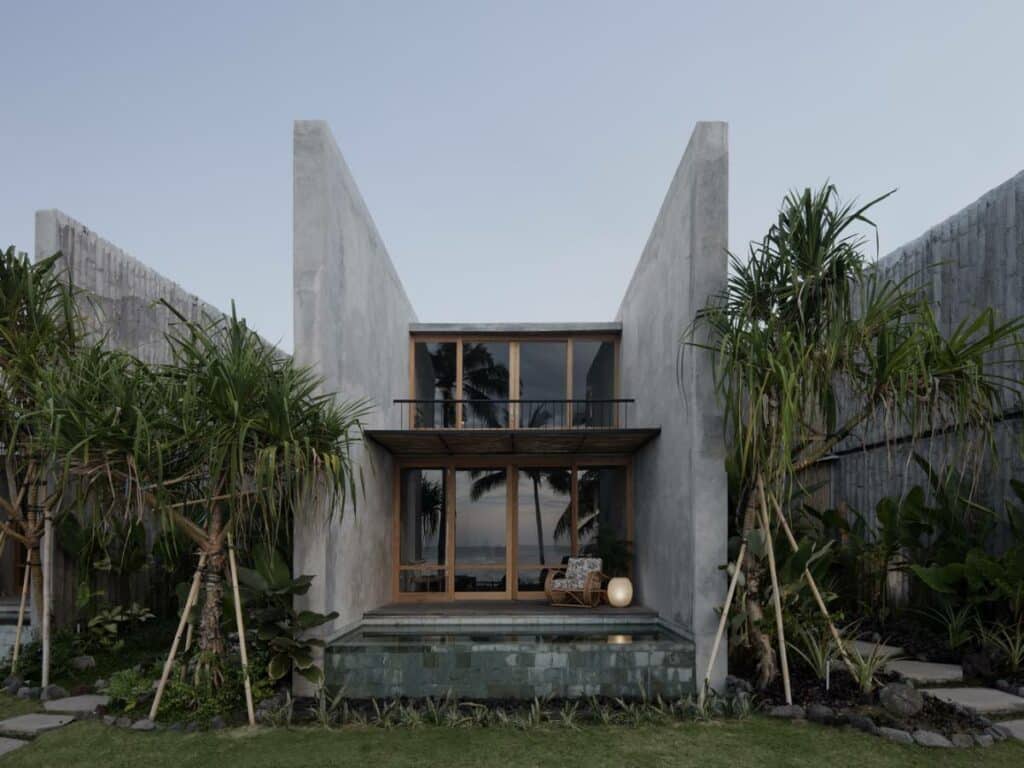
Next up on our list of eco brutalism buildings is the stunning Tiing boutique resort which is inspired by local construction materials and methods. It is hidden away on Bali’s northern coast.
The walls are cast against bamboo, and rough concrete surfaces were created via bamboo molds. To arrive at the resort, a 2.5-hour journey in Bali is necessary, but it so worth it. Each of the rooms has its own secluded pool, too, making it the perfect spot for travelers looking to escape and engage with Mother Earth.
3. The Jungle House
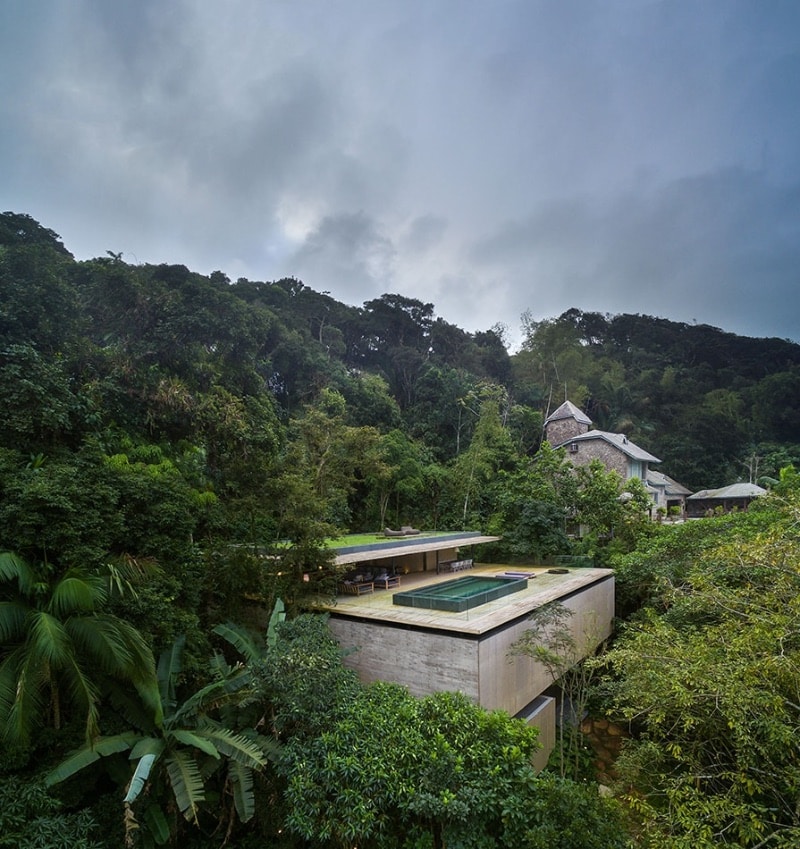
In line with the name, the Jungle House is terraced into the jungle on the coast of Guarujá. This is southeast of Sao Paulo and has three floors. The house is elevated from the ground to achieve harmony with the typography. What this means is the main floors project from the hillside!
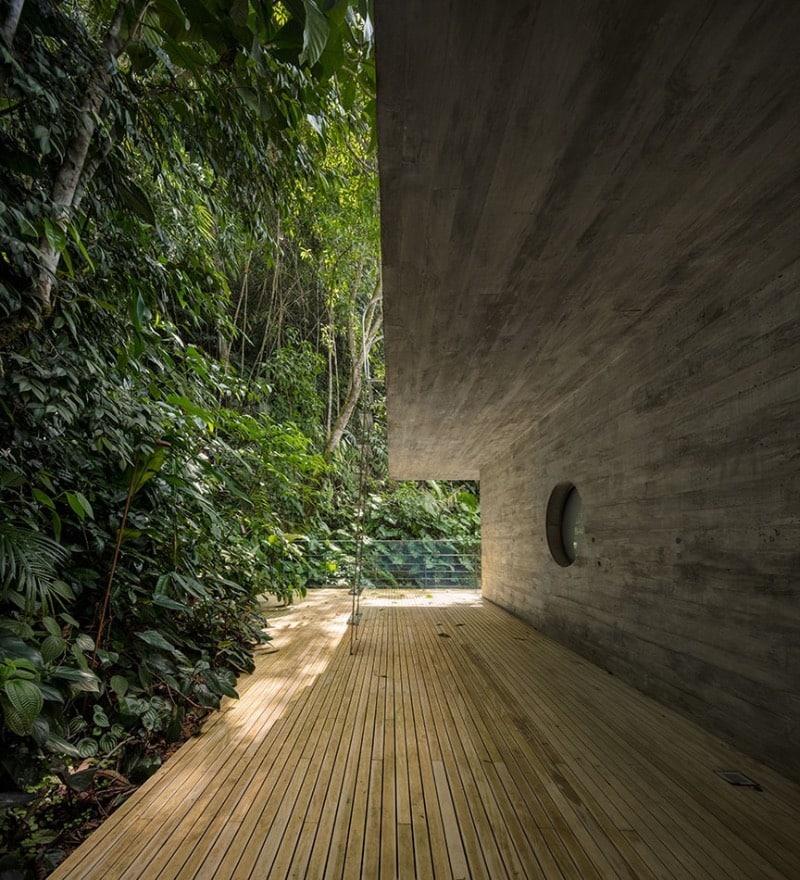
The house has two wellness areas, one of which has a pool near the terrace. A private jacuzzi is located in the other wellness space. With the tropical forest backdrop, nature sounds, and beautiful greenery, this is the perfect place to come visit and relax. It offers an entirely unique experience that is unlike any other.
4. The Casa Meztitla
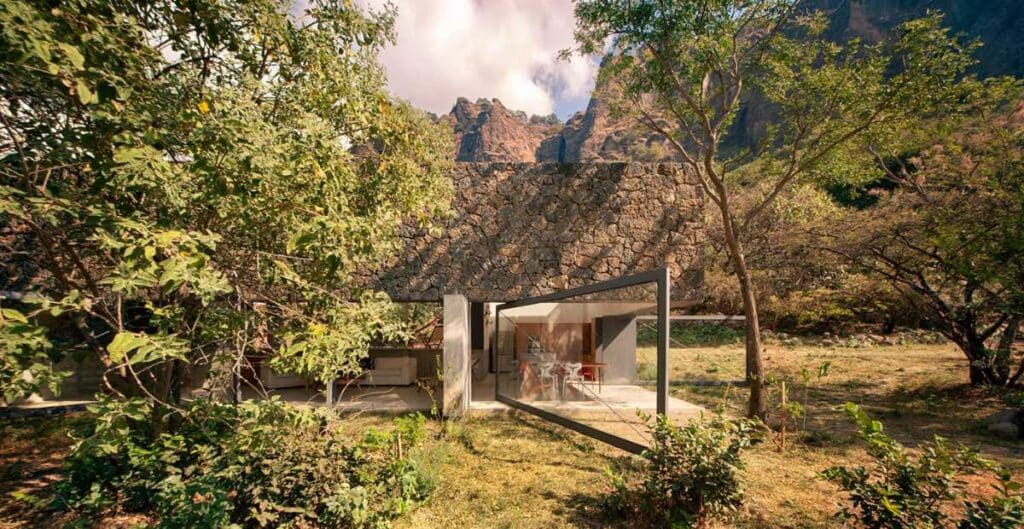
The Casa Meztitla consists of a stunning local volcanic stone with exposed concrete to absorb its natural surroundings. It has a pool that collects rainwater which is then kept in a cistern under the villa. Nearly all the rooms open to the outside, and there is a narrow pool with a hot tub.
Beautiful trees and greenery surround the villa. This house is so uniquely built that there is no possible way to compare it to anything else. A mountain acts as a beautiful backdrop where the intense, warm sunlight beams over the property.
Eco Brutalism Interior
Brutalism and eco brutalism are not just about the outside of a home; the interior matters too! When brutalism was formed, the furniture items, patterns, and colors generally stuck to a minimalist look. This means selecting leather, glass, or steep items that are black or white.
It is also a good idea to stick to geometric patterns. Today, it is all about adding a feeling of warmth and coziness to a space. Therefore, wooden tables and upholstered seating are essential. In addition, plants and greenery and areas where you can enjoy and connect with nature are a must.
It should also be mentioned that there is a new wave of brutalism that is stepping out a bit from the traditional principles and rules. In other words, red accent tiles in a kitchen or green towels in a bathroom are becoming acceptable. You can now still have a brutalist-style home while adding in some fun and exciting pops of color.
Along with selecting the right colors, fabrics, and furniture items, it is also essential to add in some finishing touches. For instance, artwork can also add textures to your home.
One of the great things about brutalism and eco brutalism is you don’t have to have a huge budget or shop solely for high-end items. This is because the aim is to achieve a home filled with minimal and functional pieces.
Conclusion – Can Eco Brutalism Become Sustainable?
As mentioned above, while eco-brutalist architecture can look beautiful, there is some element of greenwashing. In order for architects to build truly environmentally friendly buildings, they need to focus on the materials they use.
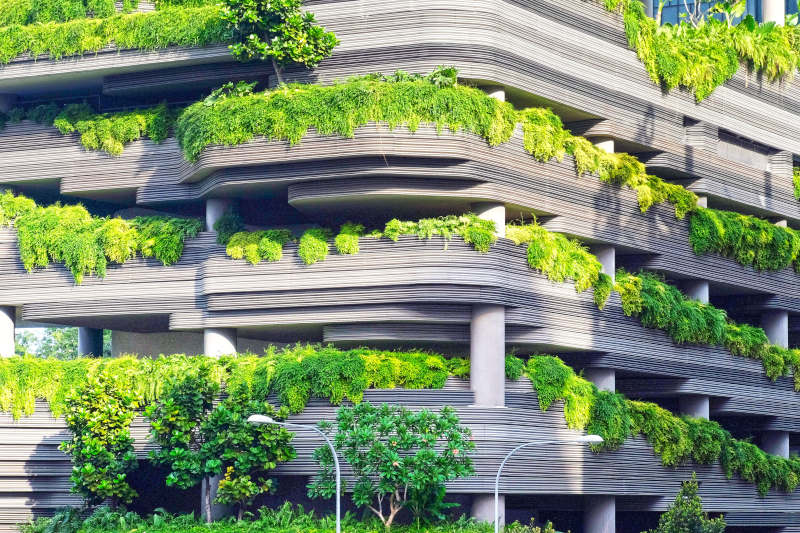
Adding greenery or rooftop biodiversity gardens are incredible initiatives, but unfortunately, this doesn’t prevent the materials from harming the planet. They need to select materials that are not dangerous for humans and animals and that will not pollute our air and water and harm our soil.
This will make a huge difference in making the architecture industry more sustainable as a whole. The idea that we could have eco-friendly houses one day that allow all life to thrive is incredibly exciting. However, eco brutalist design does not seem to be the answer.